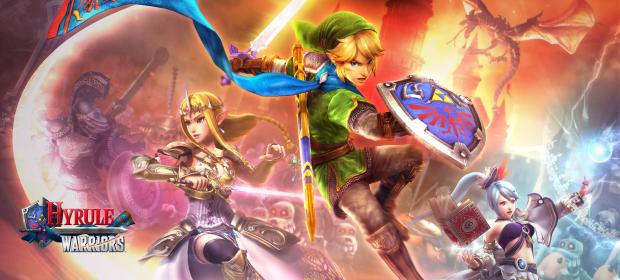Link’s a bit of a chicken really, isn’t he? And by that I don’t mean the Zelda kind of ‘hit ‘em a few times and they slaughter you’ kind of bird, I’m talking the ‘avoids most conflict’ derogatory comparison to the clucking egg dispensers. Excusing one spot of mass murder in Skyward Sword’s closing act and that Twilight Princess Wild West shoot-out, Link is more commonly found lurking around musty tombs, focusing more on exercising his grey matter than his sword arm.
Obviously I’m speaking largely in jest. Link does some pretty ballsy things when you think about it, but we’ve never really seen Link fighting on a battlefield during any Zelda games, despite numerous elements of narrative history alluding to several great wars and bloody conflicts. Hyrule Warriors, considered simply as a concept, gives the Legend of Zelda series a legitimate avenue to explore these moments without having a negative impact on the core titles.
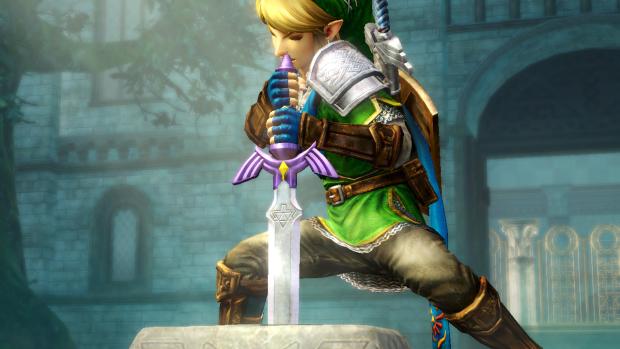
That said, Hyrule Warriors isn’t intended as part of the canon Zelda lineage. Start the game’s Legend (story) mode and you’re presented with a new Link, a new Zelda, and a new war. This is developer Omega Force’s corner of the Zelda universe and they’re eager to make it their own. Their Link isn’t so much courageous as headstrong, getting into predicaments because he’s over-confident. Their Zelda is a born leader, reactive and cunning. They create their own villainous faction in Cia and her minions, and they design a narrative hook with the sole intention of pulling together a Zelda greatest hits.
What is that hook? It’s that Cia, a being that can see all of time, becomes obsessed with Link. Zelda is royal blood, that’s a constant, and Ganon is Ganon, but Link is someone that rises when Hyrule needs him most, and Cia, corrupted by evil, decides that she wants to make him hers simply because he’s such a curiosity. Generally, the plot comes off as an amusingly hokey method of pulling the various faces of the Zelda timeline together for a spot of ‘pass the Triforce’.
Hyrule Warriors is designed within the Dynasty Warriors mould: you play a hyper powerful character and are dropped into a battlefield, where it’s your task to kill enemy commanders, create more spawn points for your troops by taking control of outposts and bases, and keep an eye on your bases and commanders to ensure the scales aren’t tipping against your favour. It’s about where you are and where you’re moving more than the difficulty of actually doing the thing when you get there.
But to accomplish your goals, you engage in combat. Two primary attack buttons create all of your offensive combos (how many light jabs you put before a strong affects what the strong attack is) while a special attack can be deployed to eradicate hordes of foes. You also have Focus Spirit (a way to go all out when you feel it’s necessary), a block button, a dodge roll, and a targeting button.
All of this is largely derivative of previous Warriors games but there are two things that are fairly unique to Hyrule Warriors. One is items such as bombs, the bow, hookshot and boomerang. You can use these to find secrets, augment combos and expose enemy weak spots. As with the core Zelda games, certain items work better in certain situations, and they work well as an added layer on top of the standard hacking and slashing.
The other unique feature is the Weak Point Gauge. Every commander and boss has a weak point gauge that will appear at specific points. Attacking and emptying the weak point gauge will initiate a big, focused attack. This is an effective way of dealing huge damage alongside being a big wink to Zelda’s wait and exploit style of combat. This is similar in look to Dynasty Warriors 8’s Storm Rush, but it’s not the same – Storm Rush was a reward for using an elemental weapon a foe was weak against, whereas the Weak Point mechanic is a universal consideration. Weapons still have elemental attributes in Hyrule Warriors, but you only choose and use one for an entire scrap, no switching mid combo or anything flashy like that.
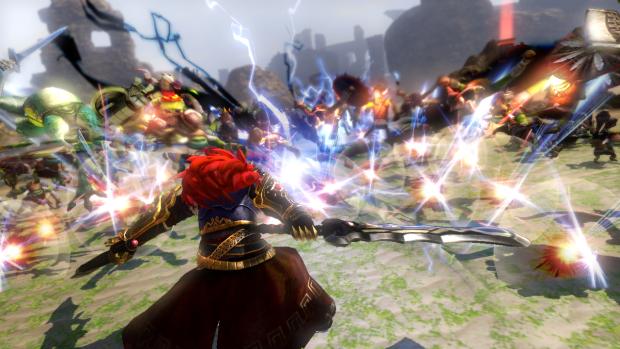
The weak point gauge is likely Hyrule Warriors’ biggest addition to the formula and it’s rather a triumph. Against commanders, it lets you react to enemy attack patterns and feel rewarded for doing so, giving you big ways to cash in on showing battlefield awareness. Plus, it feels really, really good.
Where it’s not such a success is with the boss creatures. Now if there’s one complaint that can be easily levelled on the entire Hyrule Warriors experience, it’s that it might not be quite ‘Zelda’ enough for the more cognitively focused members of the fanbase. There’s a light bit of item use in traversal but this is definitely a Warriors game with Zelda flavouring, not a 50/50 split. So in light of any traditional adventuring or puzzling, the large boss creatures are the game’s biggest ‘caveat’ to the Zelda universe.
Being so heavily Zelda these monstrous creatures rely on you waiting for an exploit, exploiting said exploit, and then wailing on the boss for massive damage. Attacking the boss when they’re not in their dazed state is largely useless. This is only an issue because Dynasty Warriors is not a game designed around waiting. They usually demand flow, and these bosses (while initially daunting and thrilling) can become somewhat jarring when you’re pursuing high ranks in Adventure mode. Dynasty Warriors is a game about plate spinning, the last thing you want is some fool telling you to wait until an enemy does a specific attack.
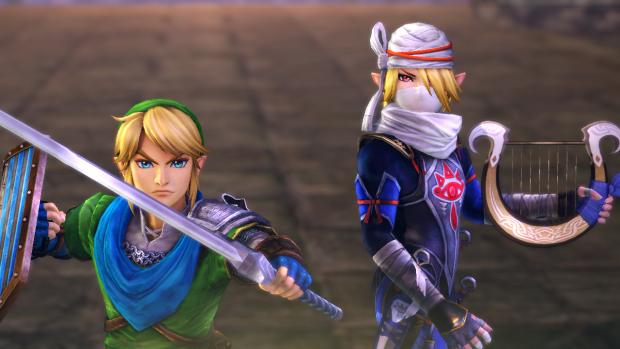
The biggest criticisms come in the form of simplicity and repetition. Even for a Dynasty Warriors game, Hyrule Warriors is easy. Its hardest difficulty is challenging, with some enemy attack patterns being particularly fiendish and damaging, and then there are the optional Skulltulla objectives alongside earning those A-ranks in Adventure mode. But even then, it does err on the easy side of the spectrum.
Repetition, too, is an unavoidable quirk of the Warriors franchise. Adventure mode suffers from this in particular. Asking you to achieve A-ranks to unlock extra weapons and new missions is fine, but forcing you to complete old missions again because you need another bomb to ‘unlock’ an unlock can be a morale deteriorating blow, particularly when you consider that the missions are all ultimately very derivative of each other (though the Zelda Quiz and Kill missions are a pleasant diversion).
The multiplayer situation is also a shame. No true online is a big let-down (the Network Links in Adventure are an asynchronous element used purely for unlocks) and the local two player is a curious thing. The gamepad resolution suffers horribly, and so does enemy density, making is a less than ideal solution. It’s still entertaining, but it’s noticeably lacking, which is a shame because Warriors games are a grand thing in co-op.
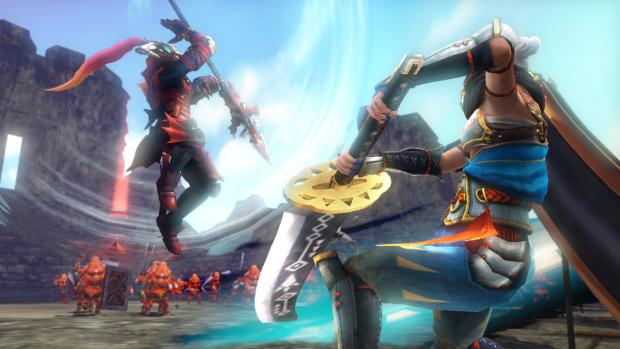
The final negative point is that fans on both sides will have issues. Warriors fans will cite missing elements, such as mounts, and perhaps not understand things like a lack of voice acting being a Zelda trope, and not Nintendo misplacing their chequebook. Zelda fans (alongside the lack of puzzles) will definitely raise eyebrows at the handful of inconsistencies, such as Midna leading an army of Stalchildren in the rather clear absence of the Twili. I fully believe that many of these issues, on both sides, can be fixed in a more comprehensive sequel.
But Hyrule Warriors presentation and feel is potentially the best of any Warriors game to date. Knocking enemies over and hearing them hit their friends like a big clutch of bowling pins. Claiming a keep in a huge splash of enemy killing colour. Using bombs to bounce an enemy towards you so you can launch into an aerial combo. Fighting a horde of creatures with the grand Eldin Bridge in the distance to a rock tinted version of Twilight Princess’ field theme. There’s even far less pop-in, in terms of enemies (still some, but it’s rare). Repetition doesn’t matter so much when it feels this good.
The characters, too, all work spectacularly. This is a first instalment Warriors game so it’s not as broad as most, but every weapon here is accompanied by a raft of brilliant ideas. Link with a sword is a whirling dervish, carving through hordes of enemies with reckless abandon. Ganon is a monster, hitting hundreds of foes with lumbering, devastating attacks. Shiek, meanwhile, uses combos to initiate certain effects, letting her adjust to specific situations. Impa can use her Nagatana to create temporary walls of fire with which to bounce enemies from for extended combos. Learning each characters’ quirks in Hyrule Warriors is hugely fun because they feel so playable; more so, in my opinion, than traditional Warriors combatants. That’s why it’s incredibly satisfying, and that’s why, for all its clear issues, Hyrule Warriors is ultimately fun to play.
Hyrule Warriors is a success. It enables Nintendo to explore the Zelda cast and world in large scale conflicts, while also offering fans an avenue for rampant nostalgia. The game only falls down due to the documented trappings of the Warriors franchise and the fault of being the first of its line, even though it does make some brave attempts to improve on the template with this. If you have a penchant for the world of Nintendo’s Hylian hero, and don’t mind the repetition of its design, then Hyrule Warriors undeniably offers an entertaining and satisfying way to engage in large scale quasi-tactical Hyrulian combat.

GOOD. A game that scores 7/10 is worthy of note, but unworthy of fanfare. It does many things well, but only a few of them incredibly well and, despite a handful of good qualities, fresh ideas and solid mechanics, it fails to overwhelm.
Review code provided by publisher.


